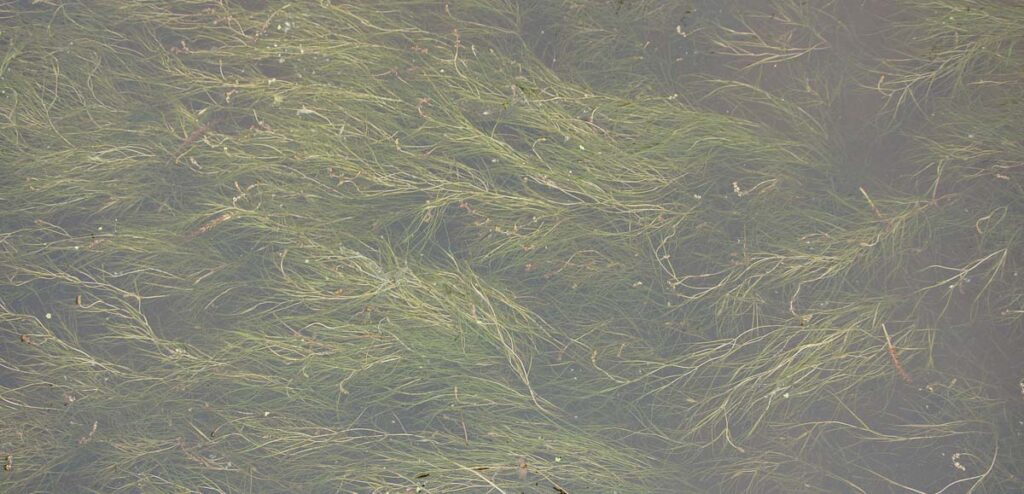Sago Pondweed (Stuckenia pectinata)
Synonym: Potamogeton pectinatus L.
Together with Wild Celery (Vallisneria americana), Sago Pondweed (Stuckenia pectinata) is considered one of the best submergent aquatic plants for wildlife. Sago Pondweed produces nutritious seeds and tubers that are eaten by many species of ducks. Both species are also tolerant of turbid conditions and can grow in many locations other submergent plants.

Sago Pondweed also has good fisheries values, and so the tubers are often planted to increase the coverage of this plant on lakes and ponds. One of the most common planting methods is to put several tubers in small mesh bags with a handful of gravel to weigh the bag down. Tubers should be planted in two to three feet of water, although the plants can grow deeper and shallower. Softer substrates are preferred for growth in areas with few pre-existing aquatic plants.
The plants then send roots and shoots through the bag. Since Sago Pondweed is a perennial, it will grow year after year and spread by roots and seeds if conditions are favorable.
Sago Pondweed has very narrow leaves (1-2 mm wide) and has a bushy appearance. As the plant grows and reaches the surface, it bends along the surface, where its flowers and seeds are readily visible.
